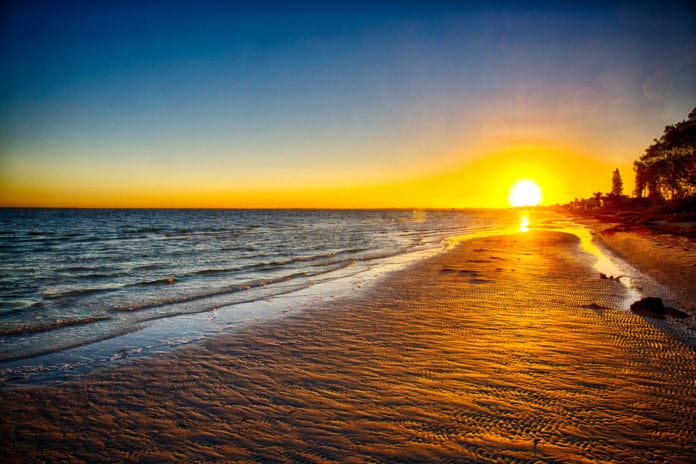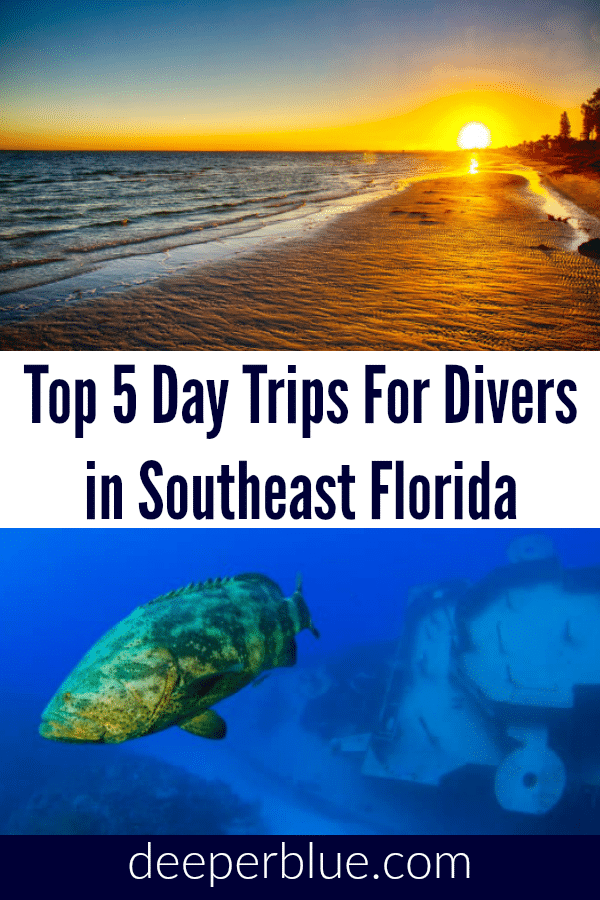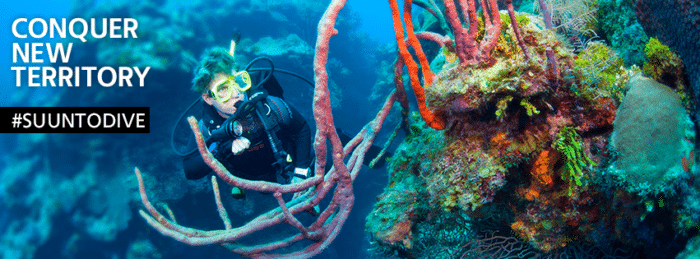South Florida…wide beaches, sunshine and tropical waters make this one of the most popular tourist destinations in the world. Divers are especially drawn to the vast reef systems around the Florida Keys and the hundreds of wrecks that dot the coastline from St. Augustine to Key West on the Atlantic Coast.
Sunken galleons filled with the lure of treasures abound, with Mel Fisher’s 1985 find of the Nuestra Señora de Atocha (Our Lady of Atocha), proof to all treasure hunters that there are still vast fortunes to find in the warm, blue waters off the Florida coast.
The incredible diversity of marine life found in the first marine park in the US, John Pennekamp Coral Reef State Park, a 70 nautical square mile playground along Florida’s Key Largo, brings divers from around the world, making Key Largo the epicenter of diving in the United States.
There are so many dive sites accessible to those with the time to explore and visit, that a comprehensive encyclopedia was needed.
In 1972, Ned Deloach introduced Florida diving to the world with his 48-page booklet “Diving Guide to Florida’s Springs”, followed by the 1974 publication of “Diving Guide to the Florida Keys”. In 1977, the wildly popular diving guides were combined into the “Diving Guide to Underwater Florida“, with much more detail and numerous new dive sites for both boat and shore diving.
Now in its 11th Edition, “Diving Guide to Underwater Florida” has set the benchmark for comprehensive information and “insider knowledge” on virtually every dive spot in sunny Florida. It would be hard to add to this seminal work, but there is always a place for looking at a handful of world-class dives that can be accessed in a single day.
Visitors to South Florida don’t have to pass up on a great reef and drift dive because of limited time or budget. While freshwater diving is virtually non-existent south of Orlando, there are numerous one-day boat trips and shore dives that can be found, catering to all levels of divers. If one is visiting any of the numerous destinations from Ft. Pierce to Miami, the choices are abundant, but there are 5 that stand out. These are all dives that can be either booked in advance when traveling to the area or easily accessed from shore. All Florida dive shops are more than happy to rent gear…just bring your Certification card, a bottom timer/wrist computer and personal gear (mask, fins, snorkel, etc.)
Location
Treasure Ship
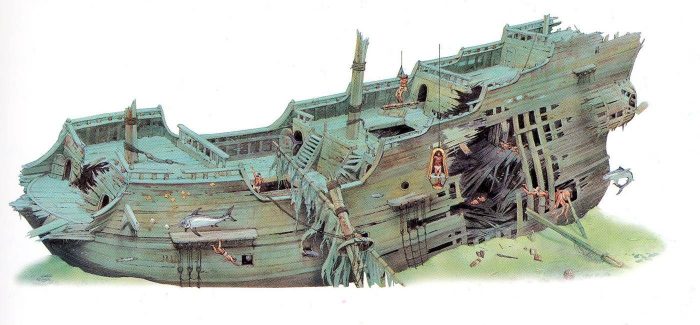
Ft, Pierce, Florida, founded in the early 1800’s as a military post during the Second Seminole War, is the northern anchor for what is called Florida’s Treasure Coast. On July 31, 1715, ten Spanish Galleons were sunk in a massive hurricane off the coast of Florida, near what is now Ft. Pierce. Tons of gold and silver bullion and plate were lost, and though millions of dollars of treasure have been salvaged over the years, the vast majority is still there!
The Urca de Lima, one of the 10 ships lost in the hurricane, is located in approximately 20 feet of water, about 150 meters offshore. This is the most accessible and easiest to reach Spanish Treasure Fleet wreck and is a fascinating piece of history. Designated an Underwater Archaeological Preserve, divers are prohibited from removing or disturbing this amazing piece of history.
This is a shore dive opportunity for experienced divers. Thee are also a number of dive charters that can make the wreck of the Urca de Lima part of a fun half-day of two-tank diving in Ft. Pierce. More information can be found in the handy pamphlet (with map and coordinates) from the Florida State Museum in the Seas project.
Goliath (grouper) Amounts of Fun
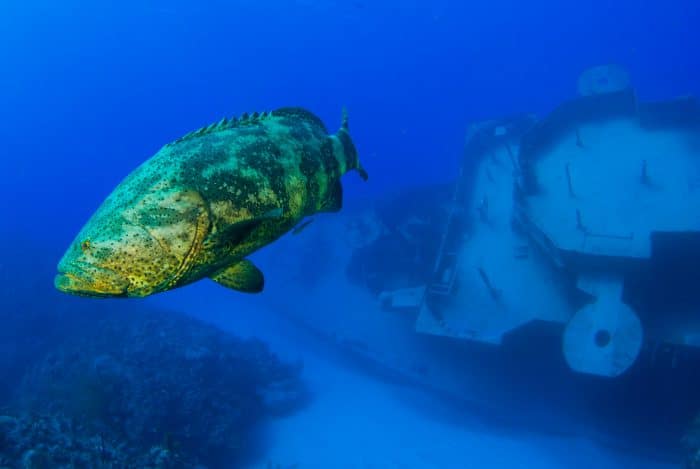
Traveling 50 miles further south, one finds Jupiter, Florida. Famous for its lighthouse and celebrity residents, Jupiter is a bustling seacoast town central to the Treasure Coast. Almost a dozen dive operators sail from Jupiter every day (weather permitting) for some of the best drift diving in the world.
Florida’s southern coastline has a series of ledges that run parallel to the shore. Generally, they can be found around the 60′ mark and the 90′-100′ depth, making for excellent two-tank drift dives. Steady currents make for exciting and energy-conserving drift diving, covering up to 500 meters or more on a typical dive.
With protruding fingers, deep undercuts and numerous valleys, these ledges are prime sites for lobster hunting and for seeing numerous species of sharks, large Goliath Grouper and sea turtles throughout the year.
But the real excitement can be found August through September. This is prime time to experience the annual Goliath Grouper Aggregation. Diving on the Jupiter Wreck Trek, three wrecks all within a short distance of each other, the visiting diver can experience one of the largest aggregations of Goliath Grouper in the world. Hundreds of these gentle giants hover like dirigibles over and in the wrecks and nearby ledges.
The Zion Train, Miss Jenny and the outstanding Esso Bonaire are typically visited in one dive…with about 75 meters between wrecks. Sitting at 72-90 feet, these magnets are home to schools of fish, sea turtles, Goliath Groupers and numerous sharks. Tiger, Hammerhead, Lemon and Bull sharks make for exhilarating diving…bring a camera for photo opportunities of a lifetime.
Muck Diving Mania!
Phil Foster State Park at Blue Heron Bridge may be the most famous “muck diving” site in the United States…certainly famous for it’s amazing diversity of small sea creatures, photographers are especially drawn to the amazing population of nudibranches, octopus and seahorses that can be found throughout the park.
Blue Heron Bridge (BHB) diving has by far the easiest accessibility of any dive site. With a public beach, on-site dive shop, huge parking lot and picnic areas, this immensely popular local hangout sits beneath the east and west spans of the bridge connecting the mainland to Riviera Beach, a city in Palm Beach County and home of the Port of Palm Beach.
Parking is free, but get there early, especially on weekends, as the park is quite popular with local beach-goers and the adjacent marina gets a lot of traffic. Bring a “Diver Down Flag”, which is required to be towed by each diver (or group). With depths from 1 to 20 feet, the best time to hit the water are 30 minutes before high tide. The current can be a little brisk between the massive bridge pilings, so divers plan their dives around the peak high tides for best clarity, depth and slow flow.
Night diving the BHB is a treat not to be missed…if you have time for only one dive while in the West Palm Beach area, this is the one to go on. Night dives at Blue Heron Bridge are only permitted under the supervision of a Palm Beach County Parks and Recreation permit holder. Individuals cannot dive at the park at night without a permit. The local dive shop, Blue Heron Bridge Scuba, coordinates these dives. Bring a primary and secondary light, your dive flag and plenty of batteries for your camera!
Eagle Rays, manatees, the occasional Hammerhead shark, turtles, moray eels, spiny lobsters and hundreds of species of fish can be seen on any dive. Huge hermit crabs with conch shells the size of basketballs and massive starfish dot the seascape, while barracuda roam the pilings. More information and Tide Charts can be found at blueheronbridgescuba.com.
The Drift is the Thing!
Ft. Lauderdale, Florida is a booming metropolis that sits midway between Palm Beach and Miami, Florida. For many divers, the greater Ft. Lauderdale area is known as the “Wreck Diving Capital of Florida”, with over 50 shipwrecks in a 23-mile stretch running parallel to the coast. Dive sites range in depth from 30 feet to 300 feet for Technical Divers.
The Gulf Stream reaches it’s closest point to the US Coast between Palm Beach and Ft. Lauderdale. This massive “river in the sea” is a veritable highway for large pelagic species; sharks, dolphins, rays, sea turtles and hundreds of other species of fish can be found in the warm Gulf Stream waters.
Drift diving is king in this region of Florida. The parallel ledges and reef system offer divers of all skill levels the opportunity to drop in at one point and then get picked up when they are done on the surface. By following the divemaster’s buoy or flag, the boat can keep track of the divers as they drift through the 100′ visibility.
Whether you want to enjoy an easy dive on a shallow wreck or two, explore the cuts and valleys of the ledge system, or try your hand at some of the more challenging wrecks in the area, the numerous dive charter operators in Ft. Lauderdale is sure to have an opening.
Tanks for the Memories, Miami!
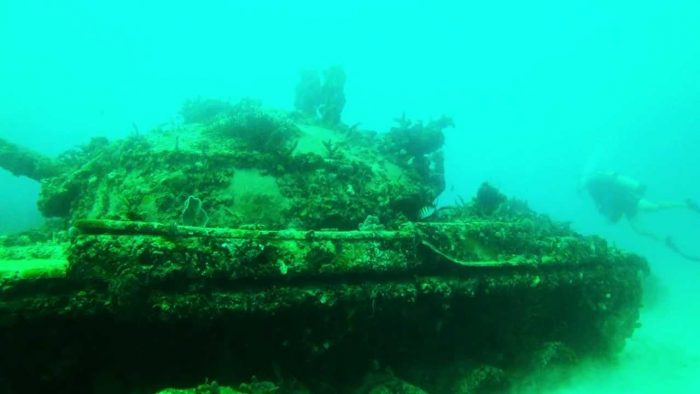
Miami boasts an extensive network of man-made dive spots. The Florida Department of Environmental Resource Management (DERM) began creating artificial reefs along the southern Atlantic coast back in 1981. In the last 4 decades, they have coordinated the placement of dozens of purpose-sunk ships, tugs, army tanks, an airplane, a radio antennae, and numerous man-made concrete “reefs”.
Dozens of dive operators offer an assortment of opportunities to explore these amazing structures, which abound with marine life. Whether you want to participate in lobster hunting or just take pictures, many of these artificial structures offer divers abundant opportunities.
Perhaps the most interesting (and easily dived) attraction are the two M60 Army Tanks that were placed in 48 feet of water in June of 1994, just off Miami Beach. DEM also placed over 1,000 tons of limestone boulders adjacent to the tanks, creating an incredible magnet for sea creatures.
This unique dive is a great entry into any diver’s logbook and promises to hold a wide assortment of corals, invertebrates and fish…and a truly unique photo opportunity for those who take the plunge!
A Word on Safety
So, a few things to remember when diving in Florida: Safety first! Always dive with a qualified buddy and dive within your certification limits. If you are going to dive multiple wrecks or deeper sites, many operators offer EANx (Nitrox) fills. Bring your Certification card (C-Card) with you and take advantage of the extended bottom times and extra margin of safety.
Most boat dives are two-tank trips, with morning and afternoon departures. The tanks are typically 100 cu.ft. steel tanks and the requisite safety tube (sausage) can be rented from the shop, if not provided. Wear sunscreen (a reef-safe product, please) and stay hydrated. The sun in Florida can be quite intense, even in the winter months.
Currents are a part of diving the Atlantic seaboard. Pay attention to all safety warnings and weather reports when diving from the shore (with a buddy) and be aware of rip-currents procedures. Public beaches fly warning flags to advise of dangerous conditions.
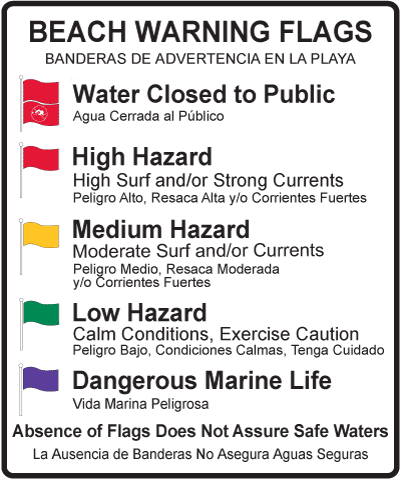
When diving in Florida, remember that if you are not diving from a vessel, you are required to tow a “diver down” flag. The law
“Requires all divers to prominently display divers-down flags or buoys in areas in which diving occurs; requires vessel operators encountering divers-down buoys to take specified actions; prohibits divers-down buoys from being used or displayed onboard vessels.”
Towed flags must be a minimum of 12″ x 12″ and divers must remain within 100′ feet of the flag.
Enjoy your trip to Florida and take advantage of any of the hundreds of dives that we are fortunate to have here in the “Sunshine State” and remember…
“take only pictures, leave only bubbles, and kill only time!“
Brought To You By
This guide is brought to you by Suunto. We recommend that you use a Suunto Dive Computer when diving one of these dive sites. Suunto is the world’s leading dive computer designer and manufacturer providing diving instruments for recreational, technical and freediving. You can find out more at Suunto.com.

